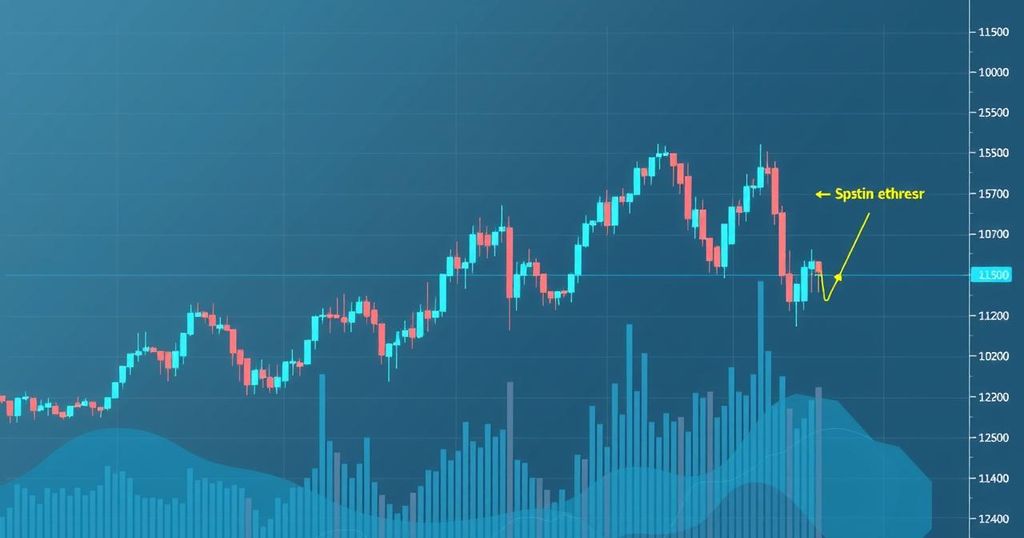Ethereum Faces Fragile Momentum Despite 10% Weekly Gain
Ethereum (ETH) has gained over 10% in the past week but faces critical resistance levels. Technical indicators reveal weakening trend strength with an ADX drop, and shifting buyer-seller dynamics suggest potential vulnerability. While the RSI shows signs of recovery, failure to hold key support could lead to a more significant correction. May is key for ETH’s next moves.
Ethereum (ETH) has experienced a notable upswing of over 10% in the last week, signalling some renewed interest from traders and investors. However, underlying technical indicators suggest that the momentum isn’t as solid as one might hope. Currently, ETH is contesting significant resistance levels which will be crucial in determining whether this rally can maintain its pace or fizzle out in the coming days. The month of May appears pivotal for Ethereum’s trajectory going forward.
The Directional Movement Index (DMI) for Ethereum reveals a concerning decline in its Average Directional Index (ADX), currently at 24.91, down from 39 just two days ago. The ADX is a widely-used tool that gauges the strength of a price trend – with values over 25 indicating a robust trend and below 20 hinting at weakness or a sideways market. This sharp ADX drop illustrates that the recent bullish momentum for ETH is quickly waning. If buying or selling activity doesn’t revive soon, we might see Ethereum trapped in a choppy, sideways motion in the near term.
Directional indicators provide further insight into market dynamics. The bullish pressure, represented by +DI, has decreased to 22.71, a fall from 31.71 three days earlier. Meanwhile, the bearish pressure measure, -DI, has risen to 17.68 from a mere 7.16 three days ago. Yesterday, the balance between buyers and sellers nearly levelled, with +DI at 20.91 and -DI at 20.1. This shift hints at a potential loss of control for buyers, increasing the risk of downward movement in ETH’s price unless buyers can fortify support levels.
On another note, Ethereum’s Relative Strength Index (RSI) has shown a recovery trend, currently sitting at 56, an increase from 45.5 just yesterday after a peak at 70.46 a few days back. The RSI is a momentum indicator that reflects price movement speeds and extremes, with readings above 70 signalling overbought conditions, and below 30 indicating oversold situations. Typically, values between 30 and 70 are considered neutral, and around 50 suggests indecision.
The recent shift in ETH’s RSI points to a volatile market sentiment. With this current reading, there’s a slight bullish tilt, indicating buyers are regaining some traction, albeit not with strong conviction yet. Should the RSI persist in climbing towards 60 and above, it could prompt a more considerable upward push in ETH prices. Conversely, if momentum declines and the RSI dips again, it might suggest that enthusiasm is fading, plunging Ethereum back into a broader consolidation or potentially a correction phase.
Ethereum’s price action has been wrestling with a crucial resistance at $1,828. A decisive break above this level could set ETH on a stronger upward trajectory. Targets to observe include $1,954 and possibly even $2,104 if the bullish momentum holds firm. Should the uptrend escalate further, a test of $2,320 could become a reality, highlighting a significant bullish move.
Conversely, if Ethereum falters and loses its hold on current levels, key support lies at $1,749. A slip below this could lead toward $1,689, and if bearish sentiment escalates, significant support levels at $1,537 and $1,385 come into play. Falling through these levels could signal an even deeper correction, implying the current recovery efforts were fleeting, setting the stage for a prolonged bearish trend.
Disclaimer: This article is for informational purposes only and does not constitute investment advice




Post Comment